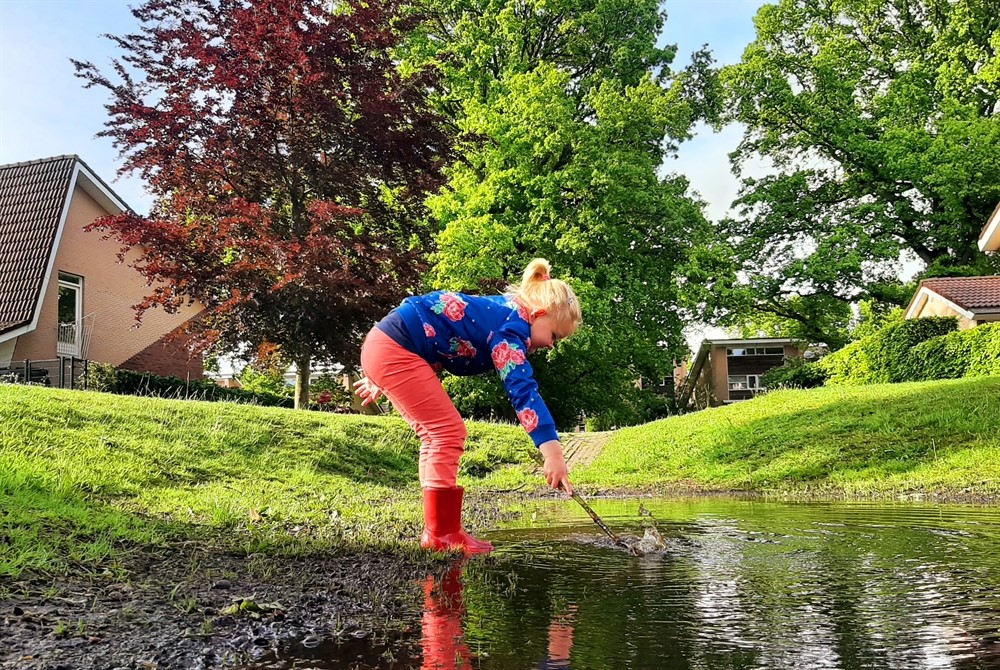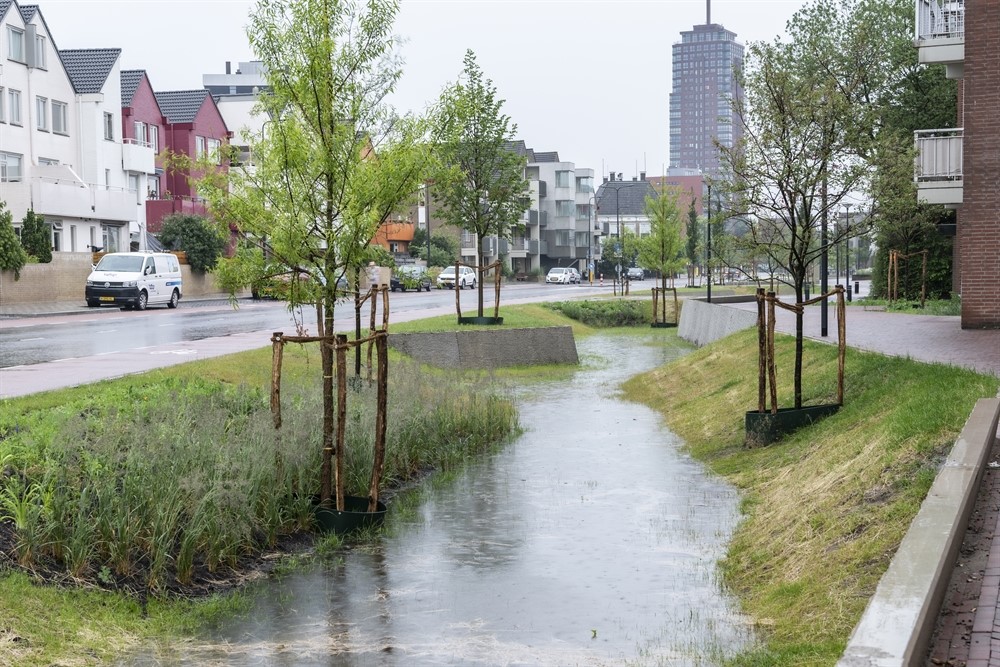Enschede presents Water and Climate Adaptation Plan 2022-2026
In order to prepare the city of Enschede for the consequences of climate change, the municipality has drawn up its Water and Climate Adaptation Plan 2022-2026. In this plan, Enschede is integrating its water and sewage management policies with its climate adaptation goals. What are the municipal adaptation goals and how does water feature in these goals? What measures is the municipality considering to achieve these goals? More information is provided below.

What adaptation goals is Enschede pursuing?
The municipality has outlined three goals in its Water and Climate Adaptation Plan:
- a safe, healthy, and attractive environment for people, animals, and plants;
- acceptable risk levels;
- acceptable sewage charges.
The municipality intends to achieve these goals in concert with residents, entrepreneurs, and NGOs.
Goal 1: A safe, healthy, and attractive environment
A safe and healthy environment requires high-quality groundwater, surface water, and drinking water. The sewer system must function properly in order to minimise residents’ contact with wastewater. Furthermore, groundwater levels must not be excessively high or low. Enschede will be implementing various measures, such as creating more brooks and greenery, to render the environment attractive and to boost biodiversity.
Goal 2: Acceptable risk levels
When planning adaptation measures and water management issues, the municipality reviews potential risks. For example, is there a moderate, high or very high risk of waterlogging causing damage? Following the climate dialogues conducted in 2020 and 2021, Enschede decided to lower the acceptance limit. This means that in addition to locations involving a very high risk, it will no longer accept high-risk locations either. Moderate risks will be accepted, however. Meanwhile, most of the locations involving a very high risk have been addressed. Between now and 2050, Enschede will be implementing measures at locations posing a high risk. Furthermore, locations involving excessive risks will be mapped every five years.
Goal 3: Acceptable sewage charges
The municipality of Enschede is using tax revenue to fund its water taskings: the residential and industrial sewage charges. The authorities are doing their utmost to minimise the increase in sewage charges. The sewage charges are determined by the maintenance costs of sewers, pumping stations, and other elements of the water system, and by the costs involved in preparing the city for extreme weather. Agreements have been made with the municipal council regarding the sewage charges to be levied in the years ahead.
How does Enschede intend to achieve these goals?
In 2020 and 2021, Enschede conducted climate dialogues regarding climate change and ways to prepare for climate change. One of the conclusions was that raising awareness, large-scale collaboration, and the pursuit of integrated strategies to address various taskings were universally considered important. The municipality has taken these results into account in a strategy to achieve its water and adaptation goals. The strategy comprises the following six key pillars.
Daily management and maintenance
Enschede sets great store by optimum sewer maintenance. It uses camera footage to determine whether a sewer needs to be repaired, renovated or replaced.
Risk-driven management
The municipality is gaining an increasingly better picture of the risks relating to water, the sewer system, and the changing climate, and of the locations facing the highest risks. The locations and issues to be addressed are identified on the basis of risk analyses.
Climate-proof designs
Climate adaptation plays a key part in the construction of new buildings and in existing buildings.
- From now on, any new buildings constructed in Enschede must be climate-proof. For that reason, the municipality assesses new construction plans against several goals. For example, maximum rainwater infiltration must be pursued in order to combat waterlogging and the negative impact of drought.
- Any measures involving public space in the vicinity of existing buildings, such as renovating a square, will be combined with climate-proofing the area. To this end, the municipality has developed the “climate label”. Each area is assigned a climate label, depending on the proportion of pavement, the proportion of greenery, and its water storage capacity. The municipal ambition is to have each existing area advance at least one climate label category.
Connection to the natural system
In order to prepare for extreme downpours, the municipality intends to make the most of the soil sponge effect: rainwater must be able to easily seep into the soil. The municipality is also constructing brooks to collect and discharge water, and replacing pavement with greenery. Furthermore, wadis are being constructed to collect water.
Neighbourhood-specific approaches
When implementing measures at a location, the municipality also considers other opportunities in the vicinity. In some cases, this enables a wider area to be climate-proofed, or adaptations to be combined.
Collaboration with residents, partners, and knowledge institutes
When embarking on projects involving public space, the municipality prefers to collaborate with housing corporations, residents, entrepreneurs, water partners, knowledge institutes, and utility companies. The goal is to develop plans garnering maximum support. Furthermore, the authorities are encouraging residents to take measures at their own premises. They intend to introduce a pertinent grant system with effect from 1 January 2022.

Lessons to be learned
What has the municipality of Enschede learned from drawing up this plan? What has worked well and what has not? Those intending to draw up an adaptation plan of their own may benefit from these tips provided by Enschede.
- Conduct a comprehensive climate dialogue with local residents, entrepreneurs, and organisations. This will garner political support for the outcomes. Also, engage in dialogues with colleagues in order to garner support within your own organisation.
- Consult the municipal council well before drawing up your plan. Ask what they deem important and how they would like to realise their ambitions. The municipality of Enschede embarked on consultations with the council almost two years before endorsing its new Water and Climate Adaptation Plan.
- Take climate adaptation into consideration in every project, in new and existing areas, even if an area is not yet encountering problems. Discuss ways to approach this with the colleagues involved.
- Adopt a neighbourhood-specific approach and tie in with other operations wherever possible.
- Are you planning to engage in a dialogue on climate adaptation with residents or entrepreneurs? First ensure that you gain insight into your target group’s perception of their environment. Not every resident sees the point of climate adaptation. For example, in many cases, a discussion about a beautiful, green, and safe living environment will tend to produce better results than discussing the risks of climate change. The Life Style Finder available at the Ons Water website can help you to gain more insight into your target group.
- Write the plan in plain language, as the municipality of Enschede has done, and ensure that it is easily accessible online.
Contact person
Lies Rubingh
Gemeente Enschede
l.rubingh@enschede.nl
